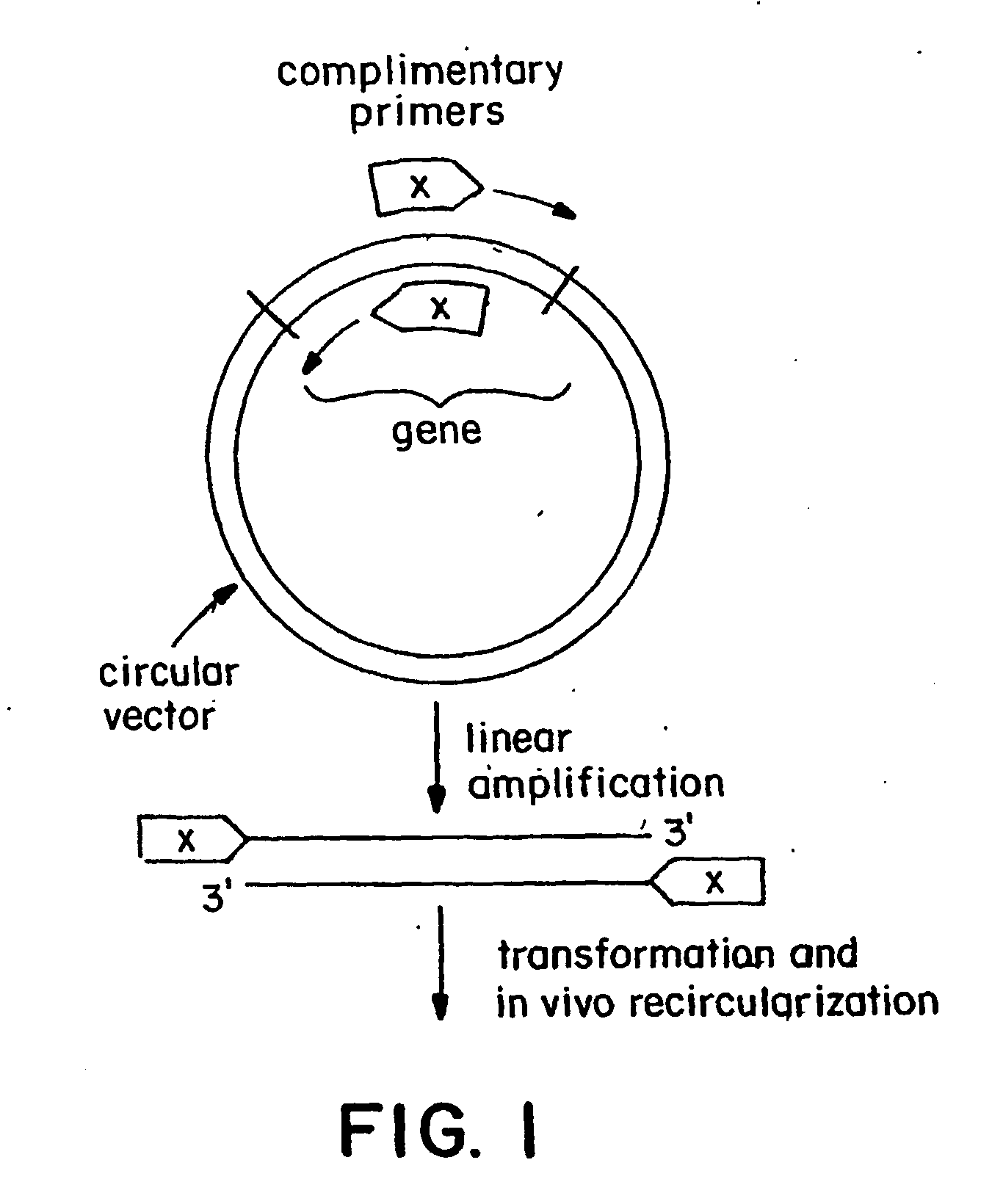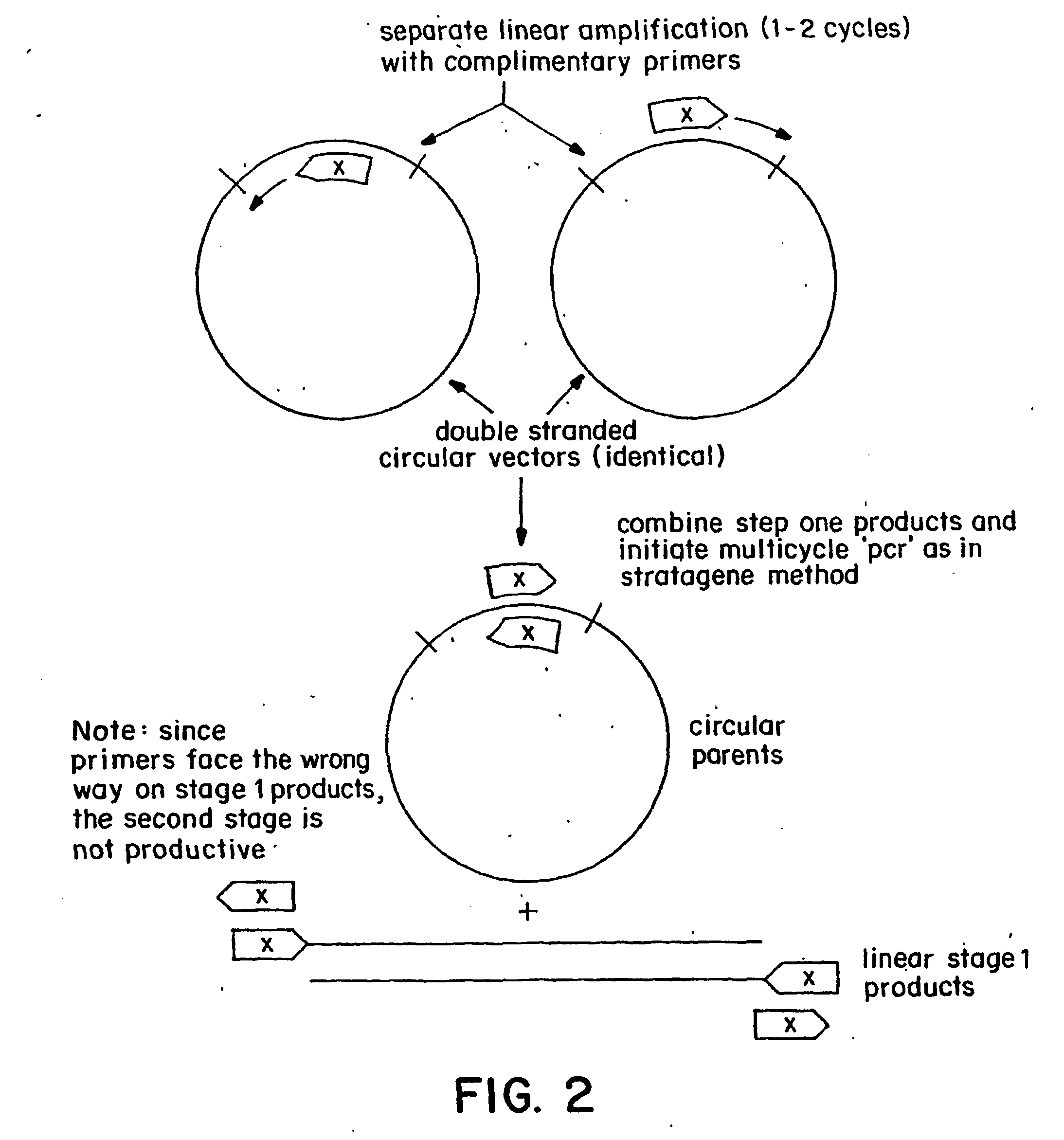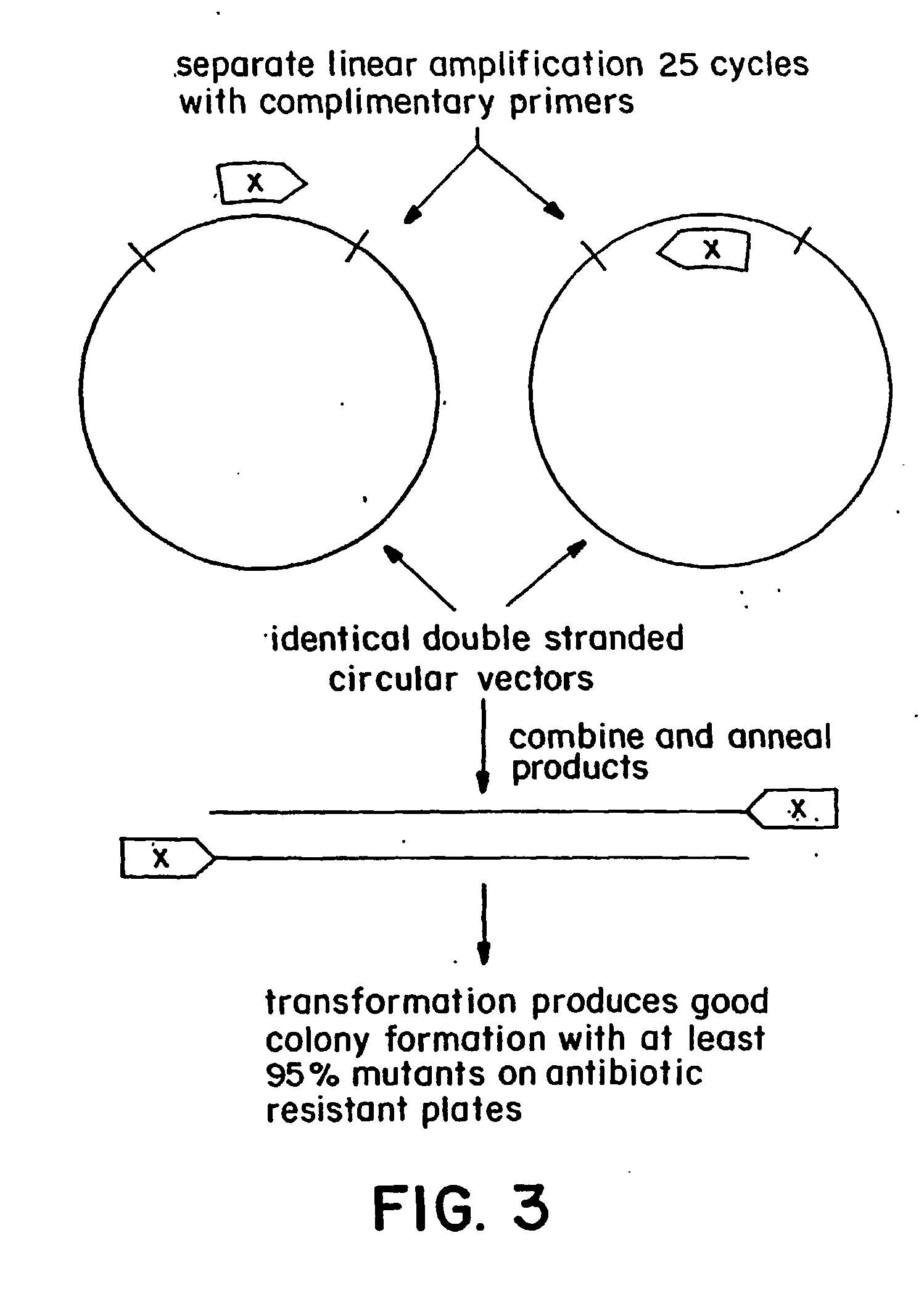Polymerase-based protocols for the introduction of deletions and insertions
a technology of polymerase and insertion, which is applied in the field of polymerase-based protocols for the introduction of deletions and insertions, can solve the problems of destroying strands, affecting the performance of wang and malcolm and qcm procedures, and affecting the quality of recombinant dna, so as to reduce the amount of primers, improve performance and efficiency, and simplify the procedure
- Summary
- Abstract
- Description
- Claims
- Application Information
AI Technical Summary
Benefits of technology
Problems solved by technology
Method used
Image
Examples
examples
[0040] Materials and Methods:
[0041] In one set of experiments, pCWori+ containing genes for endothelial and neuronal nitric oxide synthase (eNOS and nNOS) were used as the templates for mutagenesis. These systems are ˜10 kB in length; mutagenesis by conventional methods is extremely tedious. and the system represents a significant challenge. A second set of experiments introduced mutations into much smaller small heat shock protein superfamily genes in pACYC184T7, a system of 4.8 kB. Primers for the mutations were synthesized and purified by polyacrylamide gel electrophoresis (PAGE) by One Trick Pony / Ransom Hill Biosciences (www.ransomhill.com).
[0042] A single-stage of single-primer linear amplification reaction was carried out separately for the forward and reverse primers as described in the specification above. 10-25 cycles of linear amplification were carried out to produce a reasonable number of copies, which are mixed and cooled to anneal the strands. The initial denaturatio...
PUM
 Login to View More
Login to View More Abstract
Description
Claims
Application Information
 Login to View More
Login to View More - R&D
- Intellectual Property
- Life Sciences
- Materials
- Tech Scout
- Unparalleled Data Quality
- Higher Quality Content
- 60% Fewer Hallucinations
Browse by: Latest US Patents, China's latest patents, Technical Efficacy Thesaurus, Application Domain, Technology Topic, Popular Technical Reports.
© 2025 PatSnap. All rights reserved.Legal|Privacy policy|Modern Slavery Act Transparency Statement|Sitemap|About US| Contact US: help@patsnap.com



